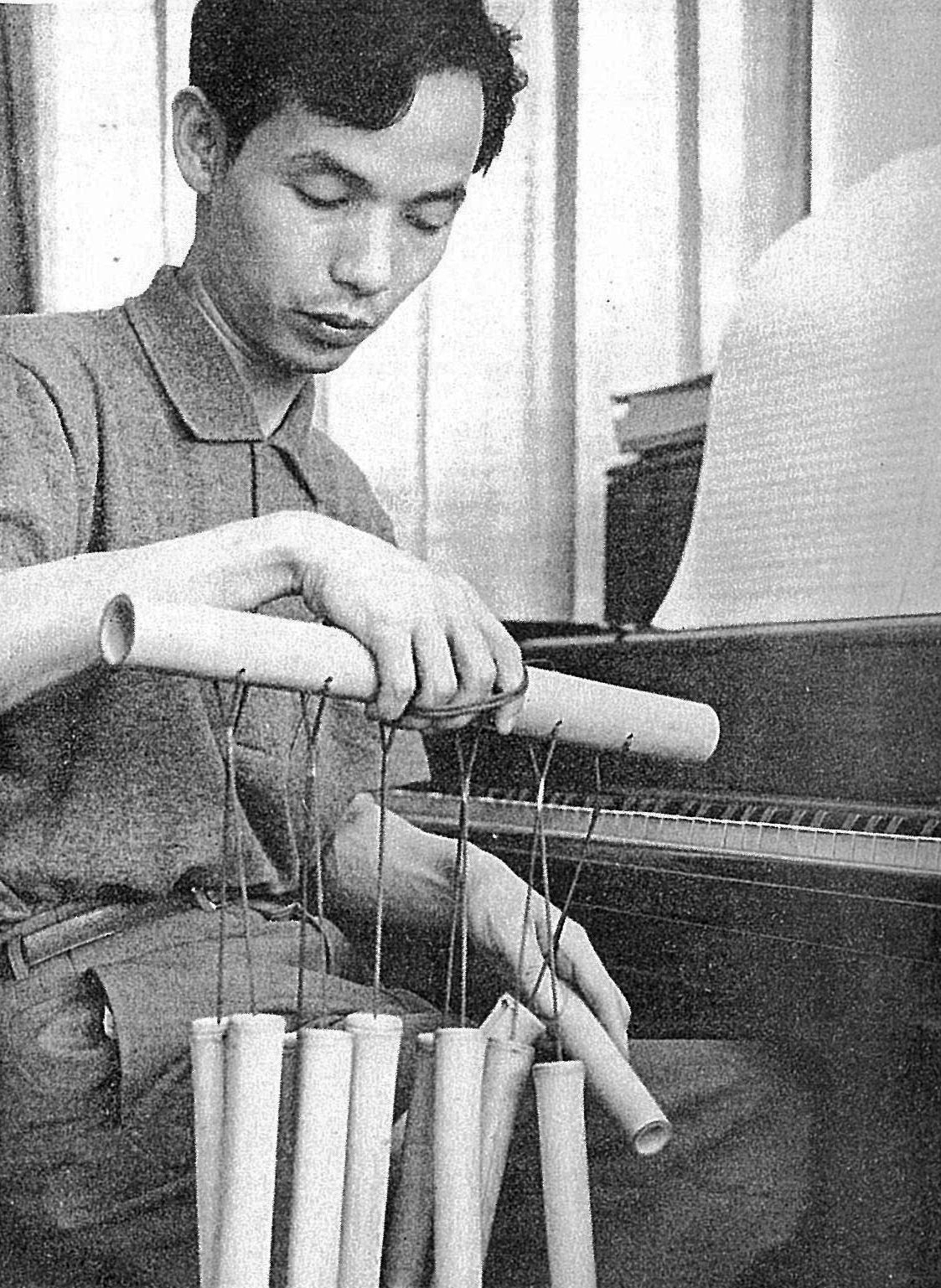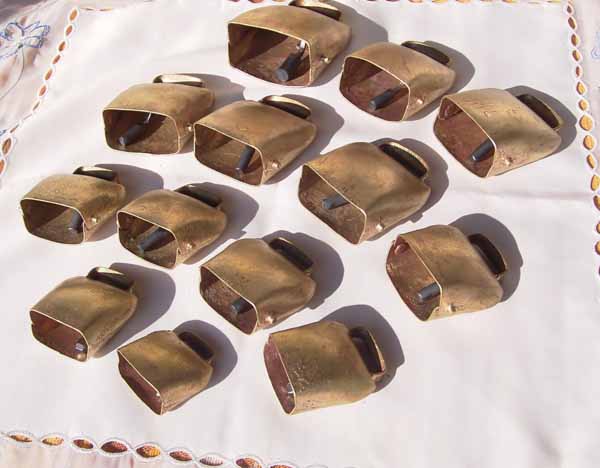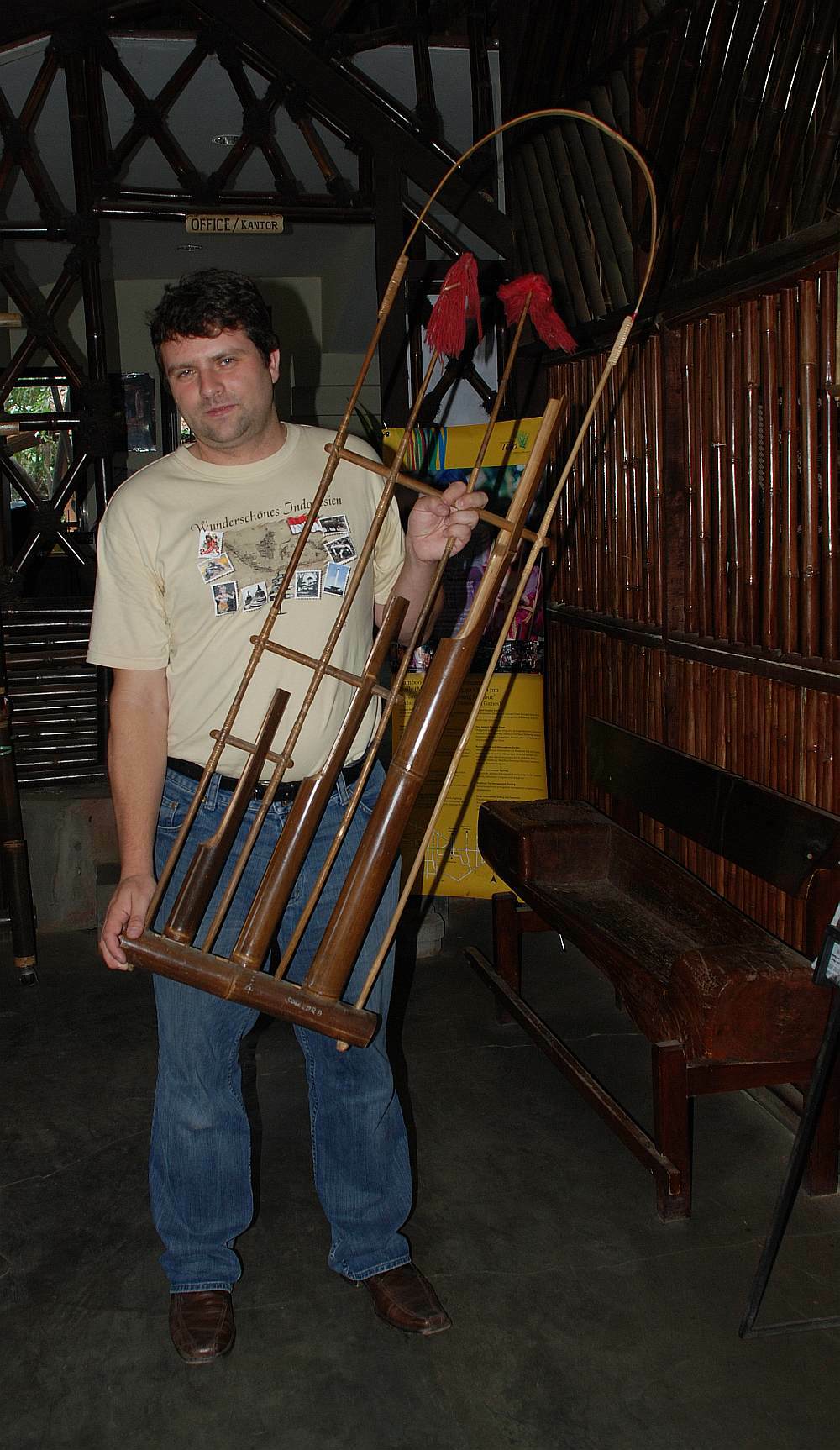|
From Me Flows What You Call Time
''From me flows what you call Time'' is a 1990 concerto for five percussionists and orchestra by the Japanese composer Tōru Takemitsu. It is considered one of the best of Takemitsu's late works. Conception ''From me flows what you call Time'' was commissioned by the Carnegie Hall Foundation to celebrate Carnegie Hall's centennial season, and was premiered on October 19, 1990 by Nexus and the Boston Symphony Orchestra, conducted by Seiji Ozawa. The title is taken from the poem "Clear Blue Water" by Makoto Ōoka, a Japanese poet and a friend of Takemitsu's. Composition Takemitsu intended the work to represent the music that had "flowed" through Carnegie Hall throughout its hundred-year history. As in many of Takemitsu's works, a blend of European and Japanese traditions creates a unique idiom. The piece includes several improvised sections, an element inspired by John Cage's indeterminacy. In the score, Takemitsu noted that "the performance should give the impression of b ... [...More Info...] [...Related Items...] OR: [Wikipedia] [Google] [Baidu] |
Tōru Takemitsu
was a Japanese composer and writer on aesthetics and music theory. Largely self-taught, Takemitsu was admired for the subtle manipulation of instrumental and orchestral timbre. He is known for combining elements of oriental and occidental philosophy and for fusing sound with silence and tradition with innovation. He composed several hundred independent works of music, scored more than ninety films and published twenty books. He was also a founding member of the Jikken Kōbō (Experimental Workshop) in Japan, a group of avant-garde artists who distanced themselves from academia and whose collaborative work is often regarded among the most influential of the 20th century. His 1957 ''Requiem'' for string orchestra attracted international attention, led to several commissions from across the world and established his reputation as the leading 20th-century Japanese composer. He was the recipient of #Awards and honours, numerous awards and honours and the Toru Takemitsu Composition ... [...More Info...] [...Related Items...] OR: [Wikipedia] [Google] [Baidu] |
Steel Drum
The steelpan (also known as a pan or steel drum) is a musical instrument originating in Trinidad and Tobago from Afro-Trinidadians. Steelpan musicians are called pannists. In 1992, the steelpan was declared Trinidad and Tobago’s national instrument by Prime Minister Patrick Manning. This helped turn the steelpan into a source of national pride and cultural identity, recognized both locally and internationally. In 2023, the United Nations General Assembly declared August 11 as World Steelpan Day. The following year, the Parliament of Trinidad and Tobago officially recognised the steelpan as the country's national instrument. Description The modern pan is a chromatically pitched percussion instrument made from 200-litre industrial drums. ''Drum'' refers to the steel drum containers from which the pans are made; the steel drum is more correctly called a ''steel pan'' or ''pan'' as it falls into the idiophone family of instruments, and so is not a drum (which is a membranop ... [...More Info...] [...Related Items...] OR: [Wikipedia] [Google] [Baidu] |
Marimba
The marimba ( ) is a musical instrument in the percussion family that consists of wooden bars that are struck by mallets. Below each bar is a resonator pipe that amplifies particular harmonics of its sound. Compared to the xylophone, the marimba has a lower range. Typically, the bars of a marimba are arranged chromatically, like the keys of a piano. The marimba is a type of idiophone. Today, the marimba is used as a solo instrument, or in ensembles like orchestras, marching bands (typically as a part of the front ensemble), percussion ensembles, brass band, brass and concert bands, and other traditional ensembles. Etymology and terminology The term ''marimba'' refers to both the traditional version of this instrument and its modern form. Its first documented use in the English language dates back to 1704. The term is of Bantu languages, Bantu origin, deriving from the prefix meaning 'many' and meaning 'xylophone'. The term is akin to kongo languages, Kikongo and Swahili ... [...More Info...] [...Related Items...] OR: [Wikipedia] [Google] [Baidu] |
Snare Drum
The snare drum (or side drum) is a percussion instrument that produces a sharp staccato sound when the head is struck with a drum stick, due to the use of a series of stiff wires held under tension against the lower skin. Snare drums are often used in Orchestra, orchestras, Concert band, concert bands, Marching band, marching bands, Parade, parades, drumlines, drum corps, and more. It is one of the central pieces in a drum set, a collection of percussion instruments designed to be played by a seated drummer and used in many genres of music. Because basic rhythms are very easy to learn to play on a snare drum even for children, the instrument is also suitable for the music education for young children and a rhythm band. Snare drums are usually played with drum sticks, but other beaters such as the Brush (percussion), brush or the Rute (music), rute can be used to achieve different tones. The snare drum is a versatile and expressive percussion instrument due to its sensitivity and ... [...More Info...] [...Related Items...] OR: [Wikipedia] [Google] [Baidu] |
Tom-tom Drum
A tom drum (also known as a tom-tom) is a cylindrical drum with no snares, named from the Anglo-Indian and Sinhala language. It was added to the drum kit in the early part of the 20th century. Most toms range in size between in diameter, though floor toms can go as large as . Design history The drum called "Thammattama", played by the Sinhalese people of Sri Lanka, is used in a number of Buddhist rituals in that country. It is commonly heard in Theravada Buddhist temple Vihāras paired along with the reed instrument called horanava. This may be etymologically derived from the Tamil term "Thappattam" or "Thappu", a frame drum associated with South Indian Tamil culture. However, the tom-tom drums on the Western drum set clearly resemble the Sri Lankan version more than the frame drum. The British colonists complained loudly about the noise generated by the "tom-toms" of the natives throughout South Asia. It is likely that the term tom-toms thus comes from their experiences ... [...More Info...] [...Related Items...] OR: [Wikipedia] [Google] [Baidu] |
Log Drum
Log most often refers to: * Trunk (botany), the stem and main wooden axis of a tree, called logs when cut ** Logging, cutting down trees for logs ** Firewood, logs used for fuel ** Lumber or timber, converted from wood logs * Logarithm, in mathematics Log, LOG or LoG may also refer to: Arts, entertainment and media * ''Log'' (magazine), an architectural magazine * ''The Log'', a boating and fishing newspaper published by the Duncan McIntosh Company * Lamb of God (band) or LoG, an American metal band * The Log, an electric guitar by Les Paul * Log, a fictional product in ''The Ren & Stimpy Show'' * The League of Gentlemen or LoG, a British comedy show. Places * Log, Russia, the name of several places * Log, Slovenia, the name of several places Science and mathematics *Logarithm, a mathematical function * Log file, a computer file in which events are recorded * Laplacian of Gaussian or LoG, an algorithm used in digital image processing Other uses * Logbook A logbook (or ... [...More Info...] [...Related Items...] OR: [Wikipedia] [Google] [Baidu] |
Boobam
The boobam is a percussion instrument of the membranophone family consisting of an array of tubes with membranes stretched on one end, the other end open. The tuning depends partly on the tension on the membrane and partly on the length of the tube. History In 1948 Harry Partch, an American composer, developed a system of music that depended on the building of various instruments that could play non-tempered scales. Some of them were based on Greek models and some on more primitive instruments like marimbas. Musician David "Buck" Wheat and his roommate in Sausalito, California, Bill Loughborough, a musician and electronic engineer, assisted Partch in the development of his instruments. Around 1955-1956 Partch designed and built an instrument he called the "boo", short for "bamboo marimba". This instrument, a lamellophone, consisted of sections of bamboo with one end closed, and a tongue cut in the side, tuned to the same pitch as the resonating chamber of the stopped bamboo se ... [...More Info...] [...Related Items...] OR: [Wikipedia] [Google] [Baidu] |
Almglocken
The cowbell is an idiophone hand percussion instrument used in various styles of music, such as Latin and rock. It is named after the similar bell used by herdsmen to keep track of the whereabouts of cows. The instrument initially and traditionally has been metallic; however, contemporarily, some variants are made of synthetic materials. Origins While the cowbell is commonly found in musical contexts, its origin can be traced to freely roaming animals. In order to help identify the herd to which these animals belonged, herdsmen placed these bells around the animal's neck. As the animals moved about the bell would ring, thus making it easier to know of the animal's whereabouts. Though the bells were used on various types of animals, they are typically referred to as "cowbells" due to their extensive use with cattle. Tuned cowbells Tuned cowbells or ''Almglocken'' (their German name, ‘Alm’ meaning a mountain meadow, and ‘Glocken’ bells), sometimes known by the Engli ... [...More Info...] [...Related Items...] OR: [Wikipedia] [Google] [Baidu] |
Wind Chime
Wind chimes are a type of percussion instrument constructed from suspended tubes, rods, bells, or other objects that are often made of metal or wood. The tubes or rods are suspended along with some type of weight or surface which the tubes or rods can strike when they or another wind-catching surface are blown by the natural movement of air outside. They are usually hung outside of a building or residence as a visual and aural garden ornament. Since the percussion instruments are struck according to the random effects of the wind blowing the chimes, wind chimes have been considered an example of chance-based music. The tubes or rods may sound either indistinct pitches, or fairly distinct pitches. Wind chimes that sound fairly distinct pitches can, through the chance movement of air, create simple songs or broken chords. __TOC__ History Ancient Rome Ancient Roman wind chimes, usually made of bronze, were called '' tintinnabula'' and were hung in gardens, courtyards, an ... [...More Info...] [...Related Items...] OR: [Wikipedia] [Google] [Baidu] |
Angklung
The ( Sundanese: ) is a musical instrument from the Sundanese in Indonesia that is made of a varying number of bamboo tubes attached to a bamboo frame. The tubes are carved to produce a resonant pitch when struck and are tuned to octaves, similar to Western handbells. The base of the frame is held in one hand, while the other hand shakes the instrument, causing a repeating note to sound. Each performer in an ensemble is typically responsible for just one pitch, sounding their individual at the appropriate times to produce complete melodies (see Kotekan). The originated in what is now West Java and Banten provinces in Indonesia, and has been played by the Sundanese for many centuries. The and its music have become an important part of the cultural identity of Sundanese communities. Playing the as an orchestra requires cooperation and coordination, and is believed to promote the values of teamwork, mutual respect and social harmony. On 18 November 2010, UNESCO included t ... [...More Info...] [...Related Items...] OR: [Wikipedia] [Google] [Baidu] |
Pedal Timpani
Timpani (; ) or kettledrums (also informally called timps) are musical instruments in the percussion family. A type of drum categorised as a hemispherical drum, they consist of a membrane called a head stretched over a large bowl traditionally made of copper. Thus timpani are an example of kettledrums, also known as vessel drums and semispherical drums, whose body is similar to a section of a sphere whose cut conforms the head. Most modern timpani are ''pedal timpani'' and can be tuned quickly and accurately to specific pitches by skilled players through the use of a movable foot-pedal. They are played by striking the head with a specialized beater called a ''timpani stick'' or ''timpani mallet''. Timpani evolved from military drums to become a staple of the classical orchestra by the last third of the 18th century. Today, they are used in many types of ensembles, including concert bands, marching bands, orchestras, and even in some rock bands. ''Timpani'' is an Italian plur ... [...More Info...] [...Related Items...] OR: [Wikipedia] [Google] [Baidu] |







